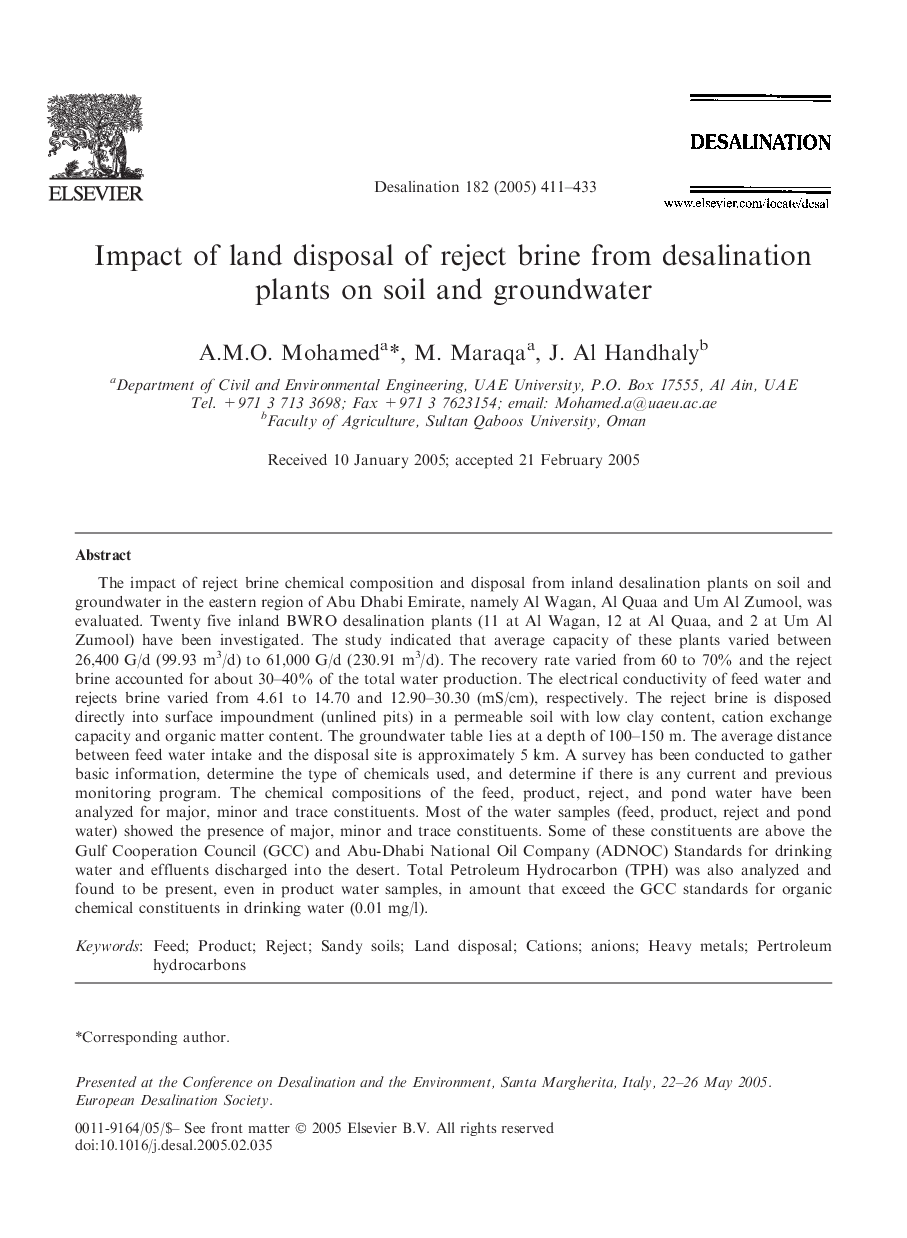| کد مقاله | کد نشریه | سال انتشار | مقاله انگلیسی | نسخه تمام متن |
|---|---|---|---|---|
| 9680999 | 1455508 | 2005 | 23 صفحه PDF | دانلود رایگان |
عنوان انگلیسی مقاله ISI
Impact of land disposal of reject brine from desalination plants on soil and groundwater
دانلود مقاله + سفارش ترجمه
دانلود مقاله ISI انگلیسی
رایگان برای ایرانیان
کلمات کلیدی
موضوعات مرتبط
مهندسی و علوم پایه
مهندسی شیمی
تصفیه و جداسازی
پیش نمایش صفحه اول مقاله

چکیده انگلیسی
The impact of reject brine chemical composition and disposal from inland desalination plants on soil and groundwater in the eastern region of Abu Dhabi Emirate, namely Al Wagan, Al Quaa and Um Al Zumool, was evaluated. Twenty five inland BWRO desalination plants (11 at Al Wagan, 12 at Al Quaa, and 2 at Um Al Zumool) have been investigated. The study indicated that average capacity of these plants varied between 26,400 G/d (99.93 m3/d) to 61,000 G/d (230.91 m3/d). The recovery rate varied from 60 to 70% and the reject brine accounted for about 30-40% of the total water production. The electrical conductivity of feed water and rejects brine varied from 4.61 to 14.70 and 12.90-30.30 (mS/cm), respectively. The reject brine is disposed directly into surface impoundment (unlined pits) in a permeable soil with low clay content, cation exchange capacity and organic matter content. The groundwater table lies at a depth of 100-150 m. The average distance between feed water intake and the disposal site is approximately 5 km. A survey has been conducted to gather basic information, determine the type of chemicals used, and determine if there is any current and previous monitoring program. The chemical compositions of the feed, product, reject, and pond water have been analyzed for major, minor and trace constituents. Most of the water samples (feed, product, reject and pond water) showed the presence of major, minor and trace constituents. Some of these constituents are above the Gulf Cooperation Council (GCC) and Abu-Dhabi National Oil Company (ADNOC) Standards for drinking water and effluents discharged into the desert. Total Petroleum Hydrocarbon (TPH) was also analyzed and found to be present, even in product water samples, in amount that exceed the GCC standards for organic chemical constituents in drinking water (0.01 mg/l).
ناشر
Database: Elsevier - ScienceDirect (ساینس دایرکت)
Journal: Desalination - Volume 182, Issues 1â3, 1 November 2005, Pages 411-433
Journal: Desalination - Volume 182, Issues 1â3, 1 November 2005, Pages 411-433
نویسندگان
A.M.O. Mohamed, M. Maraqa, J. Al Handhaly,